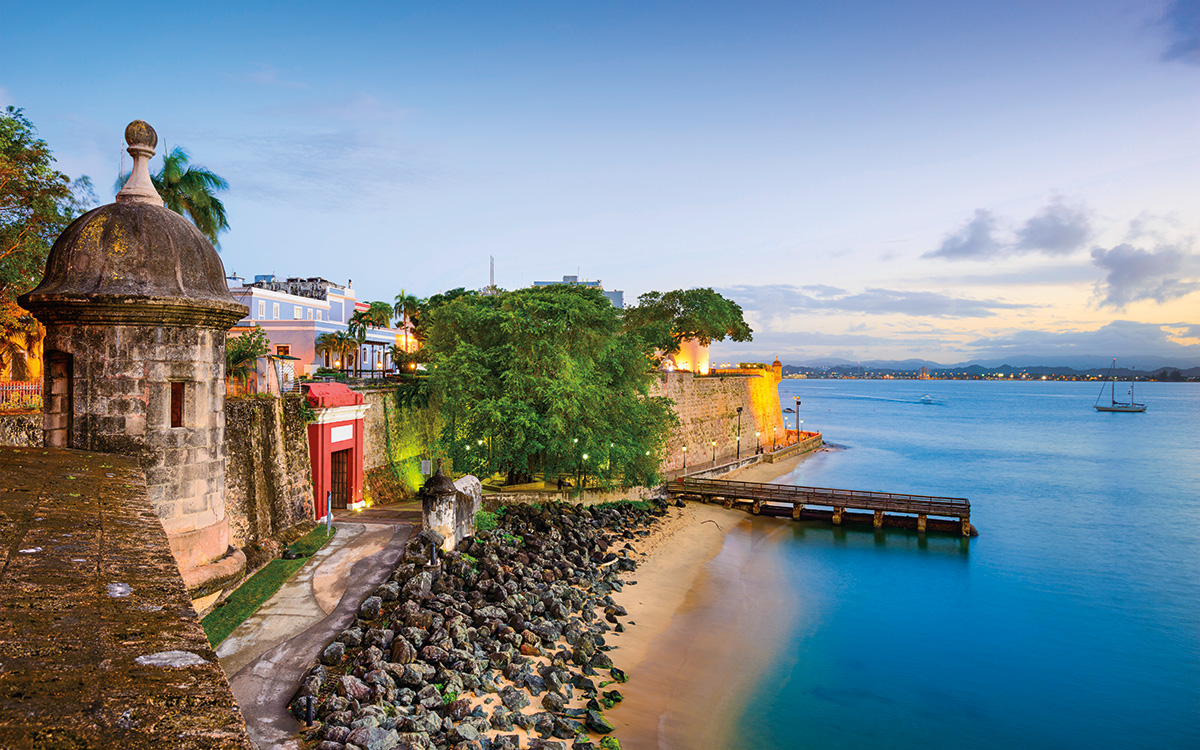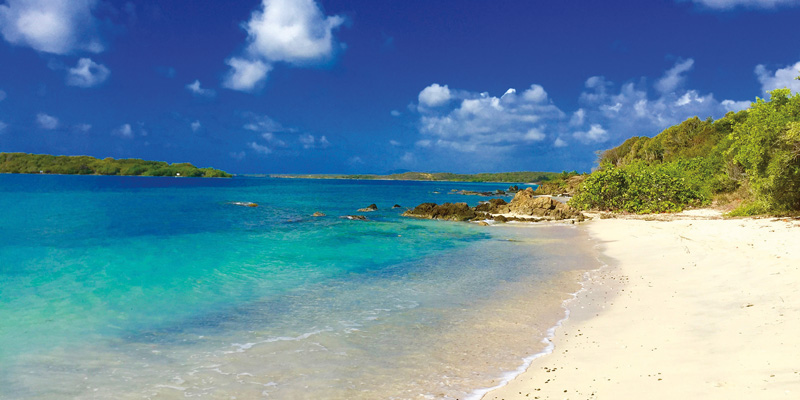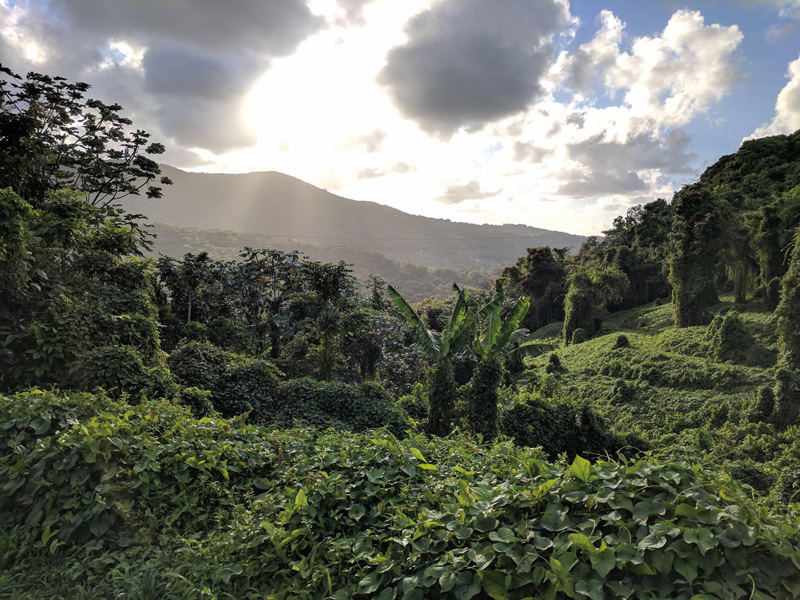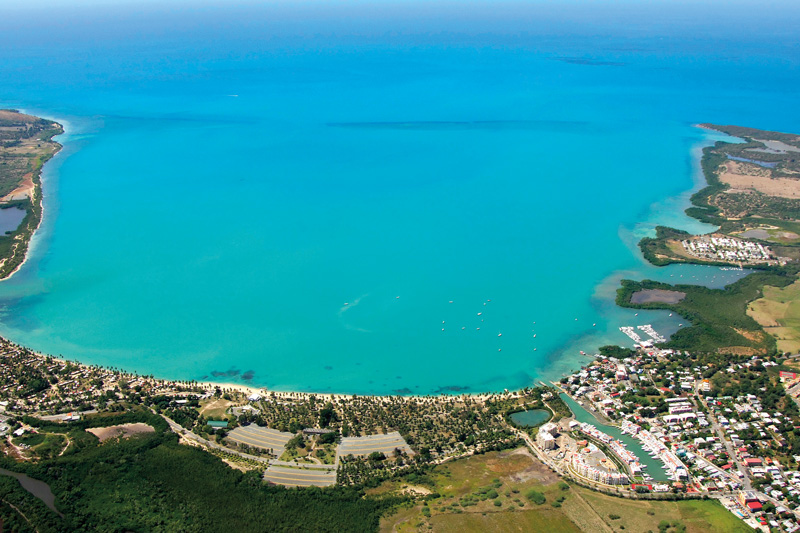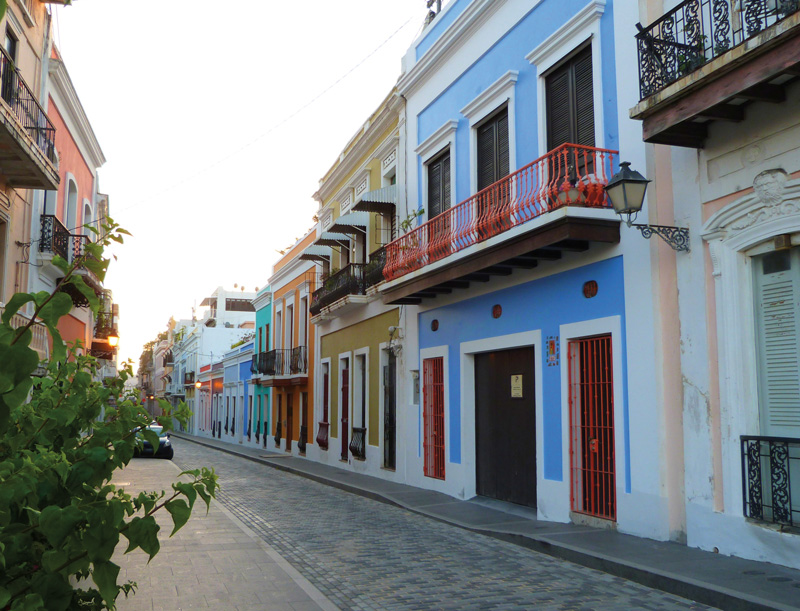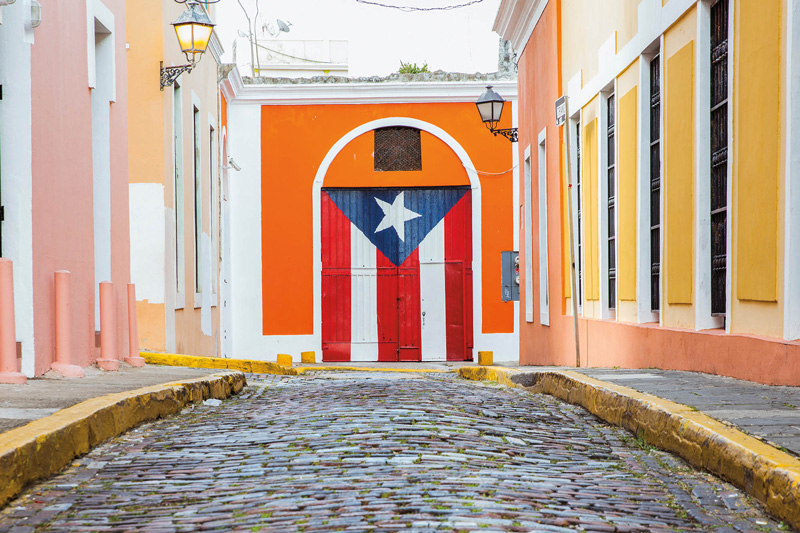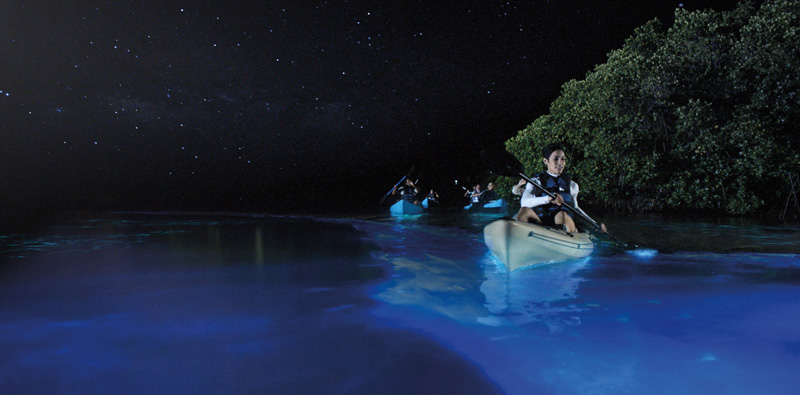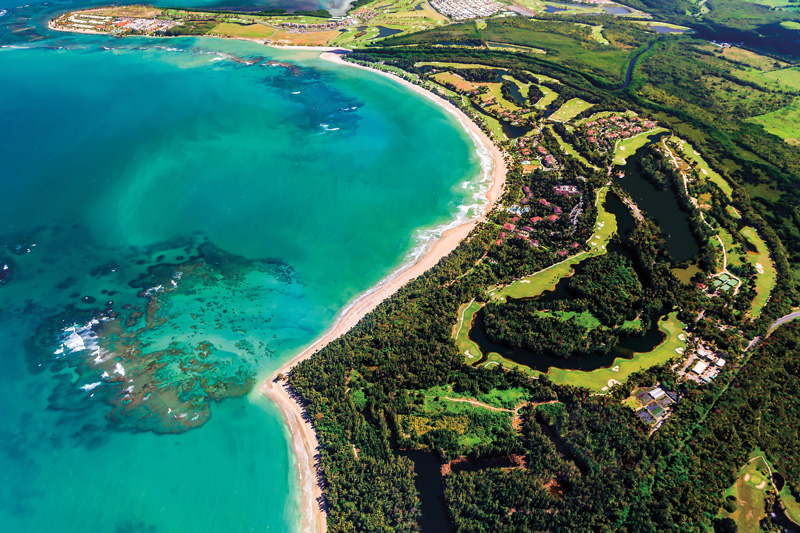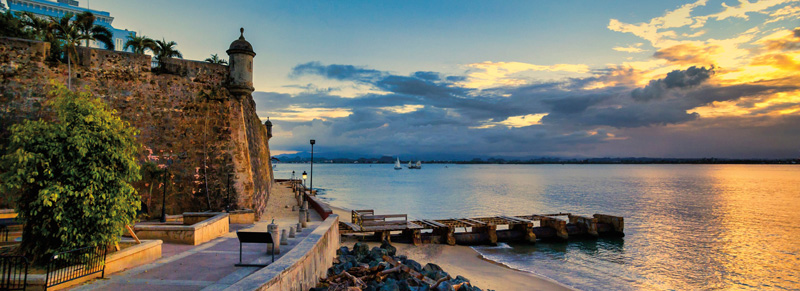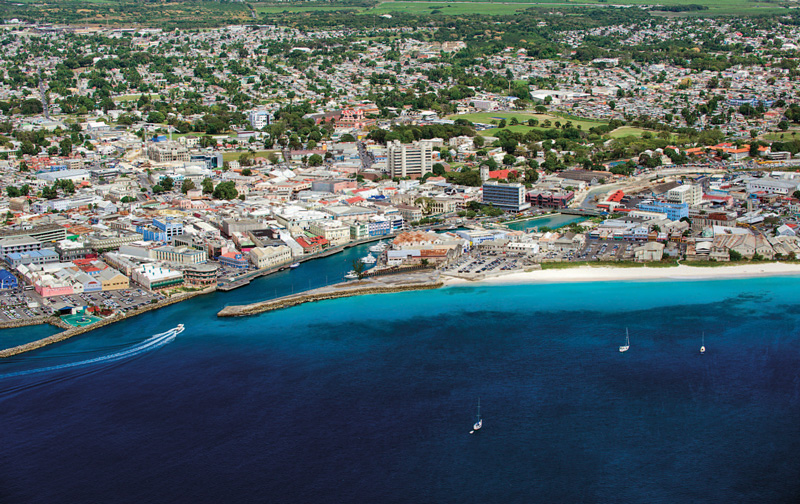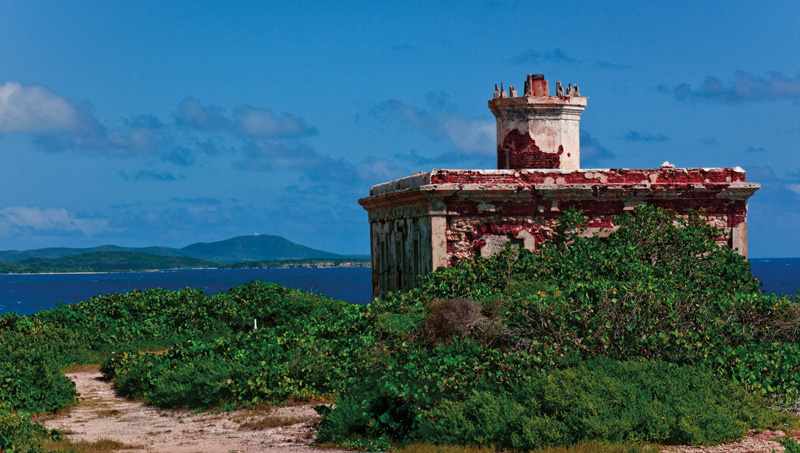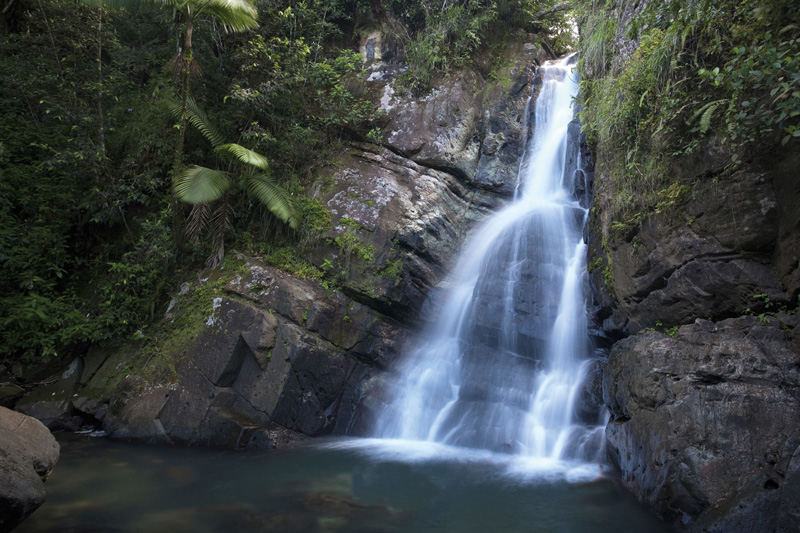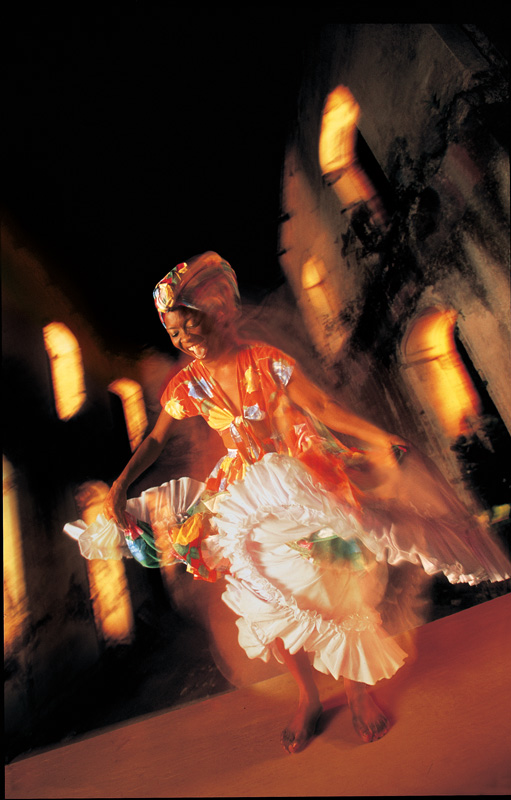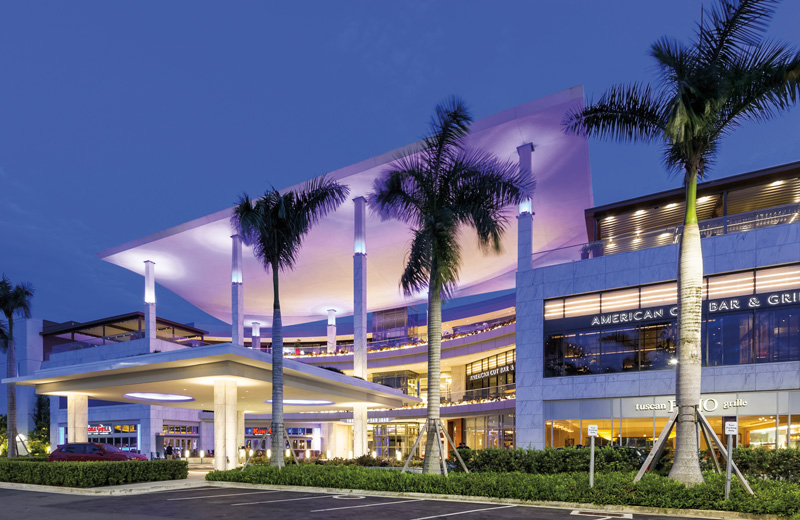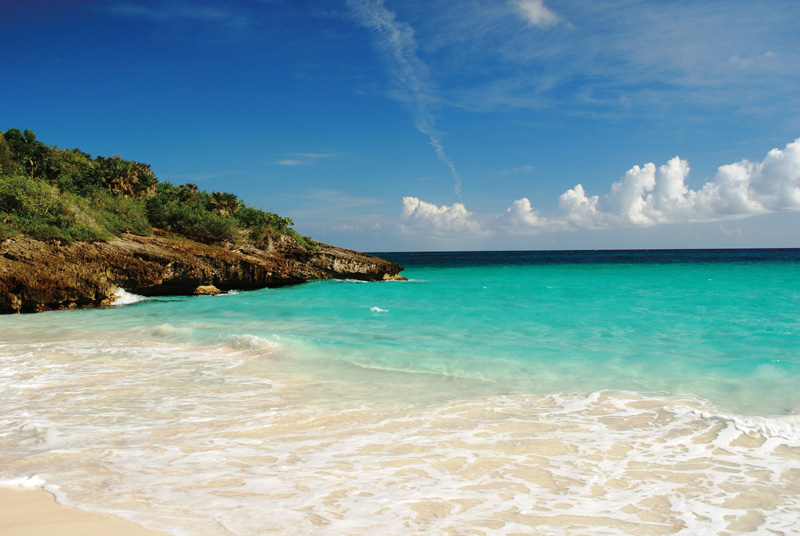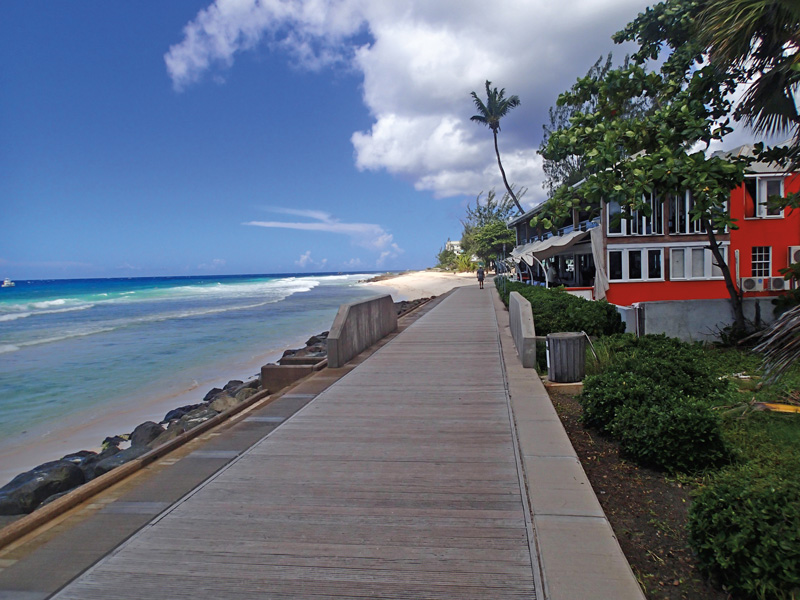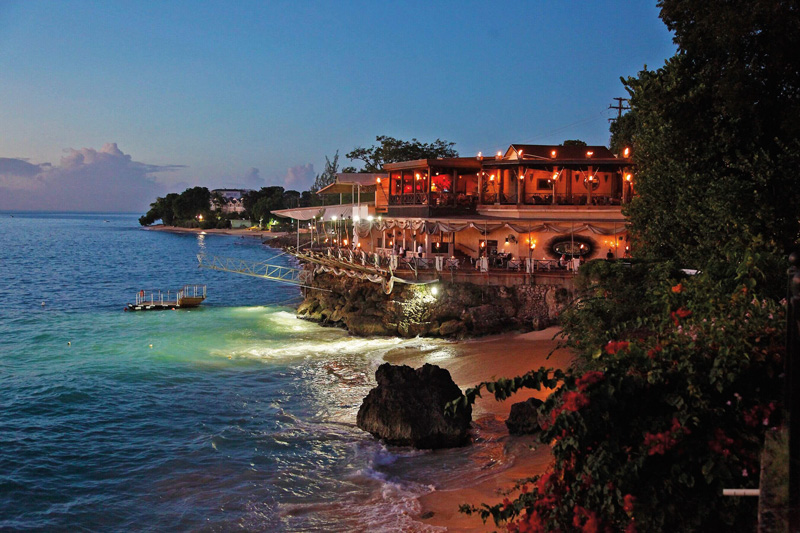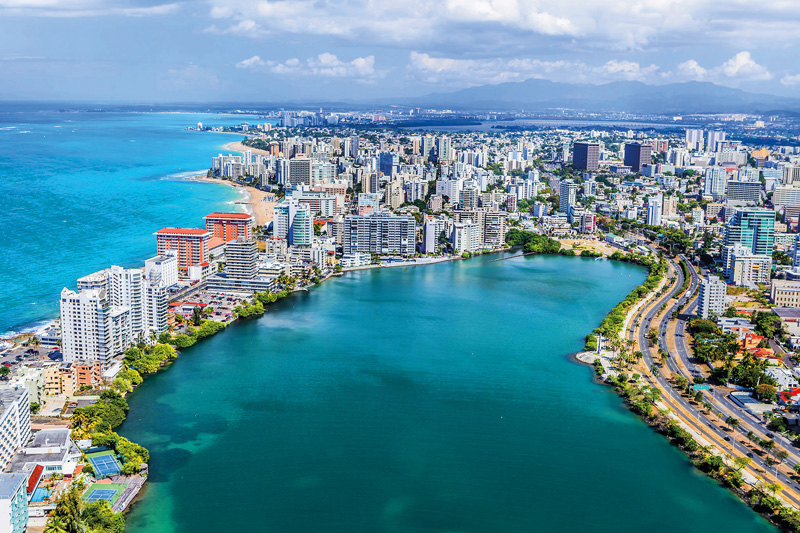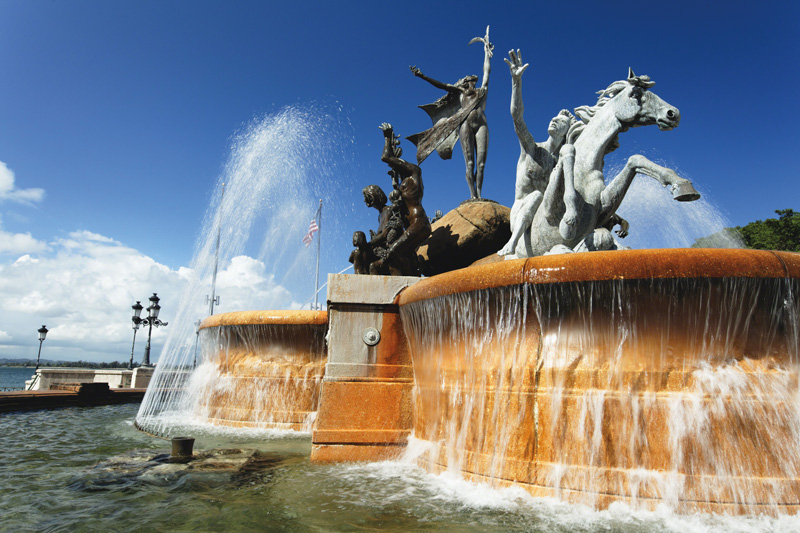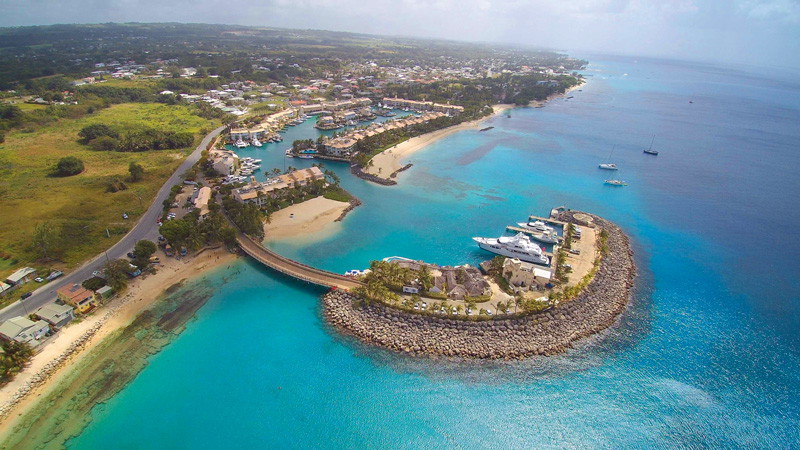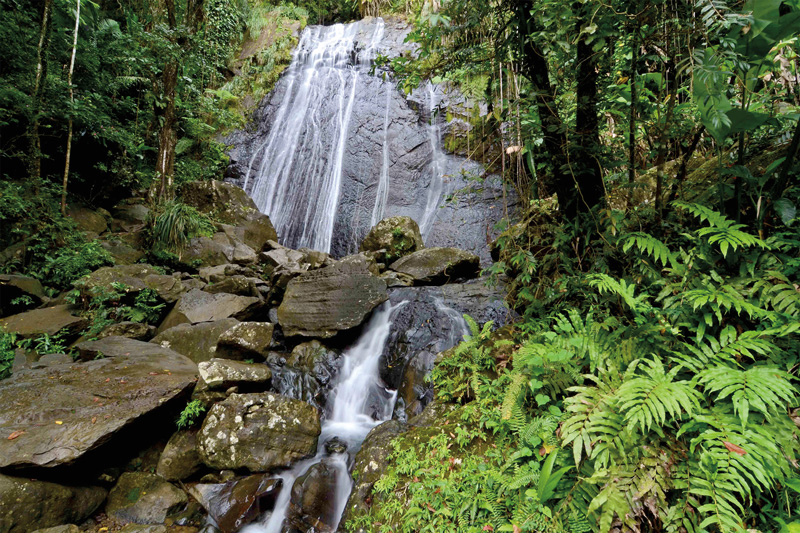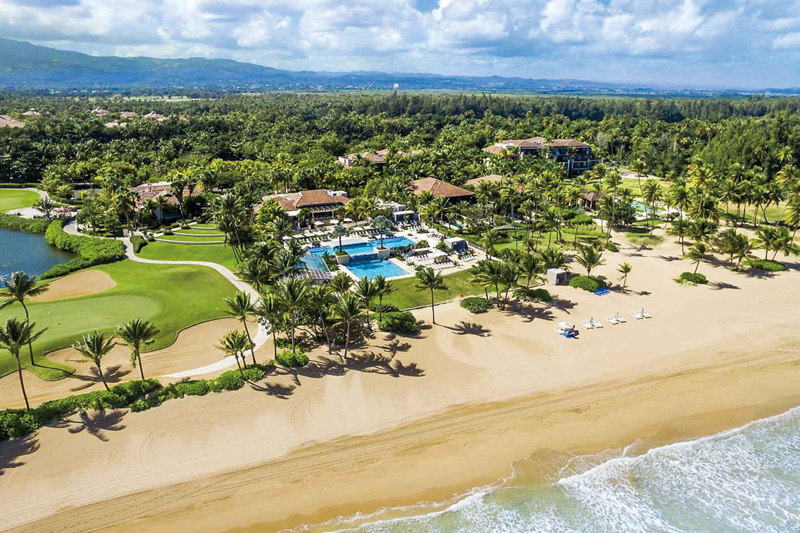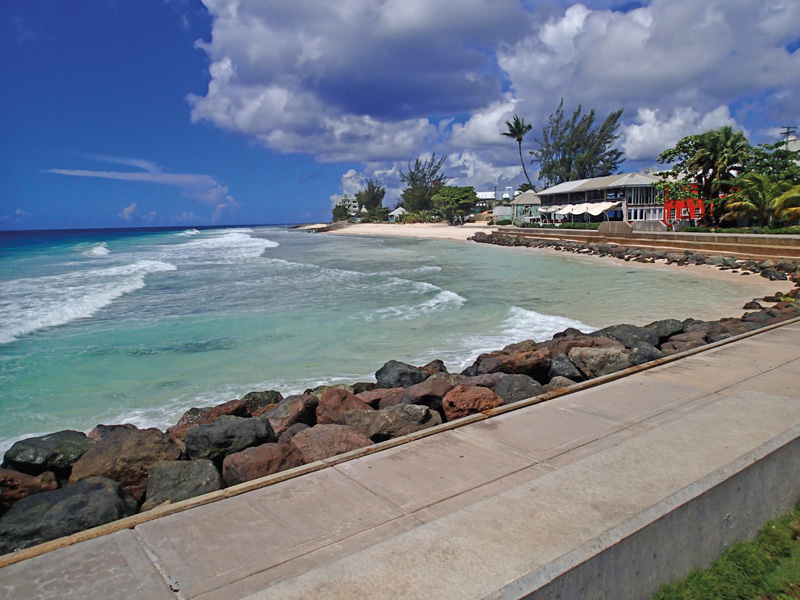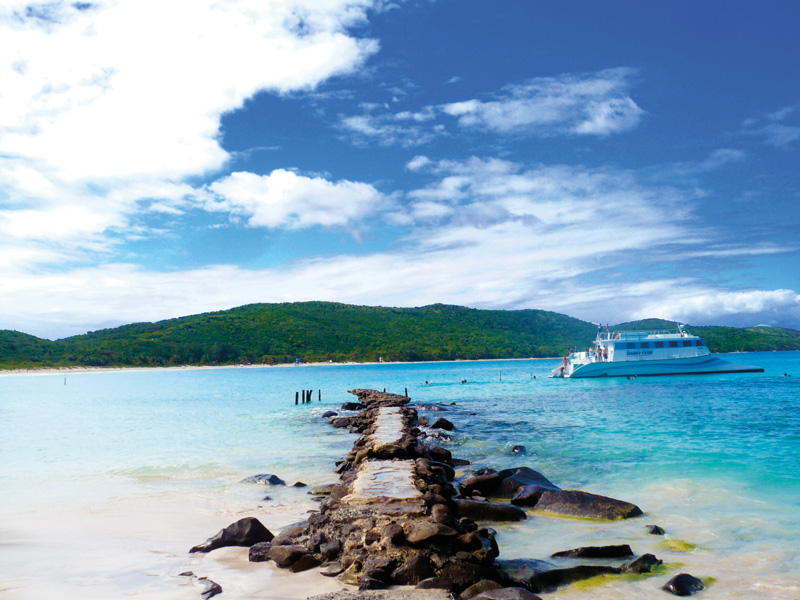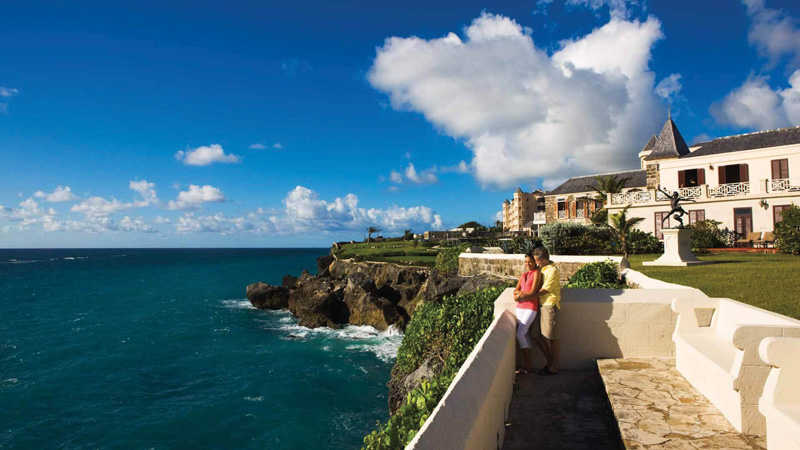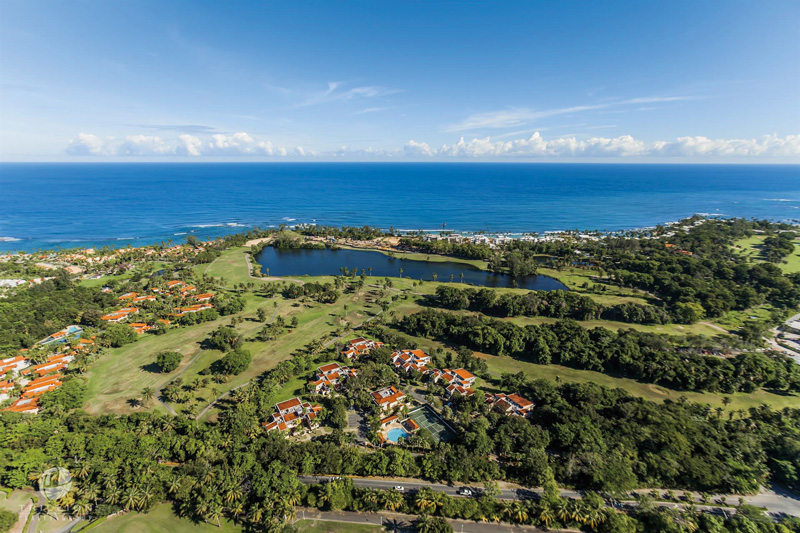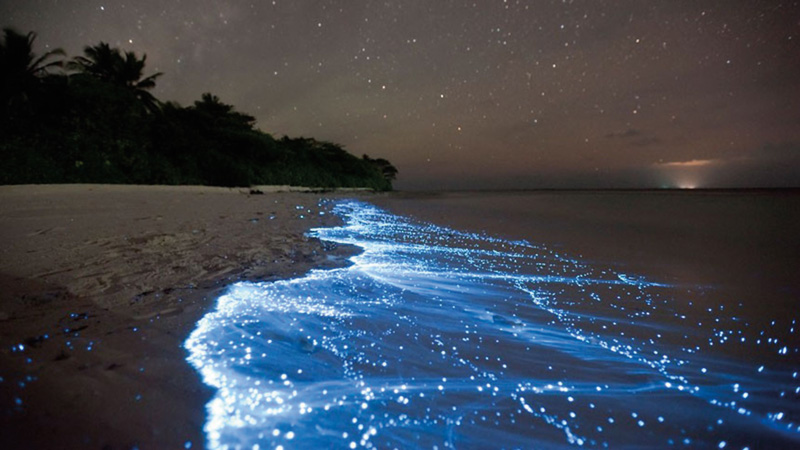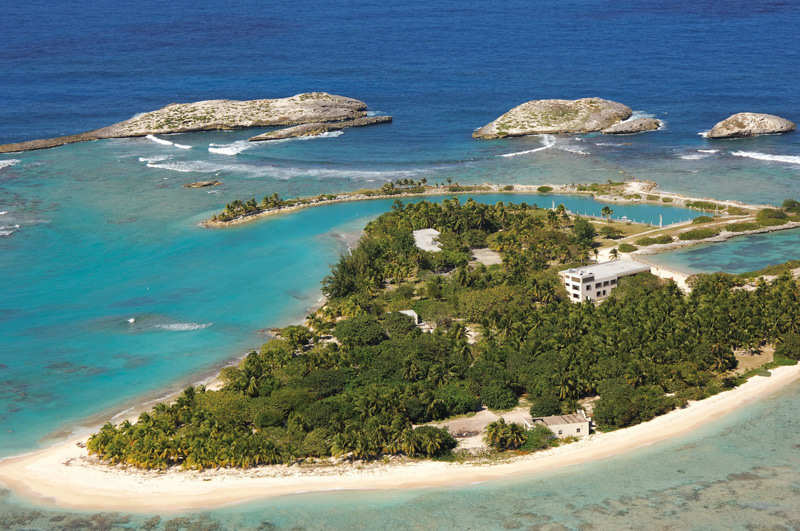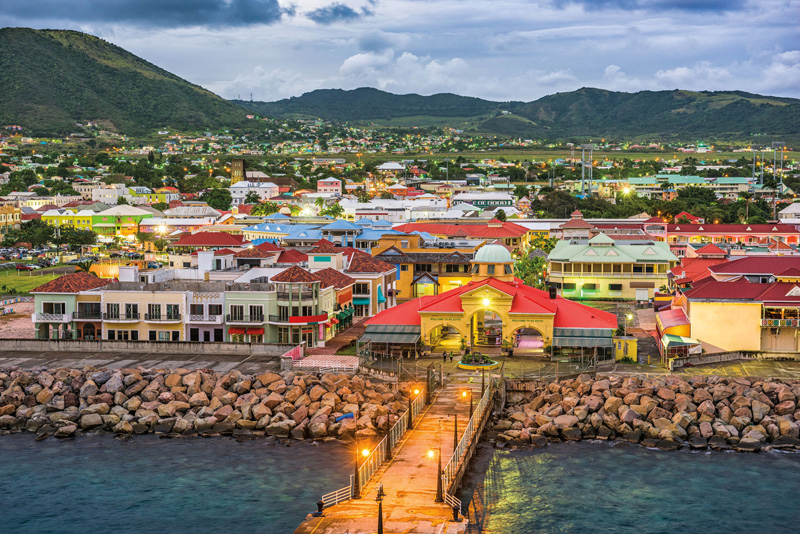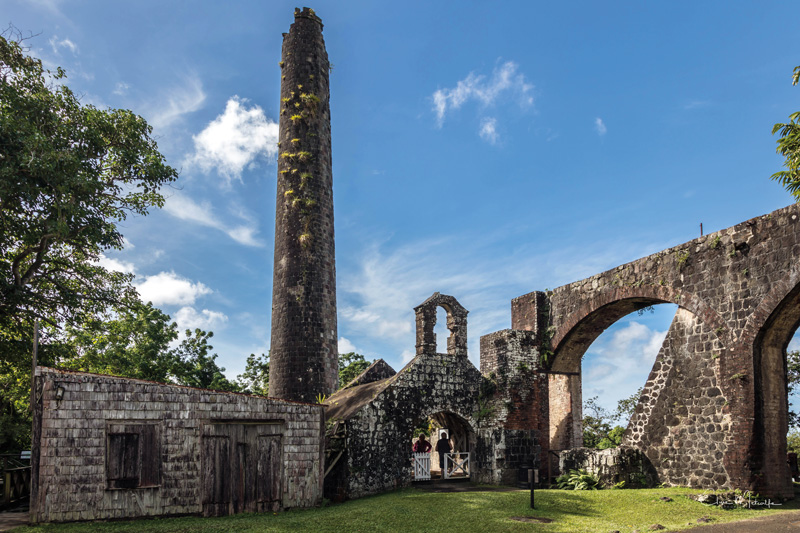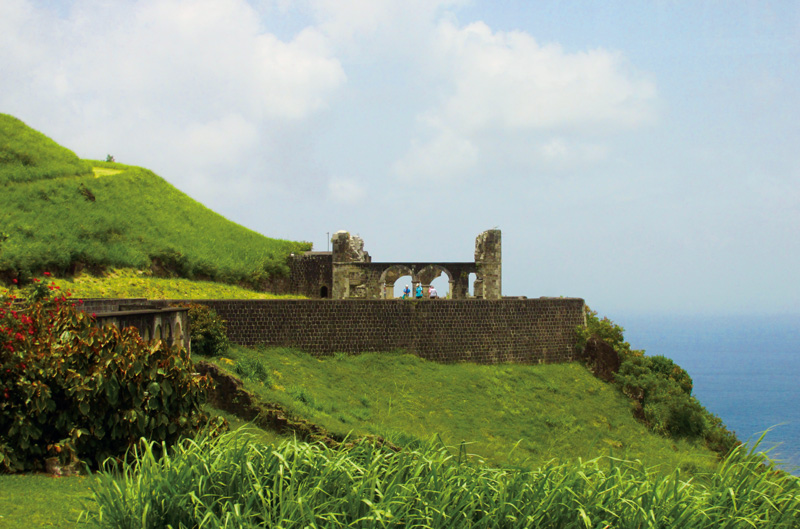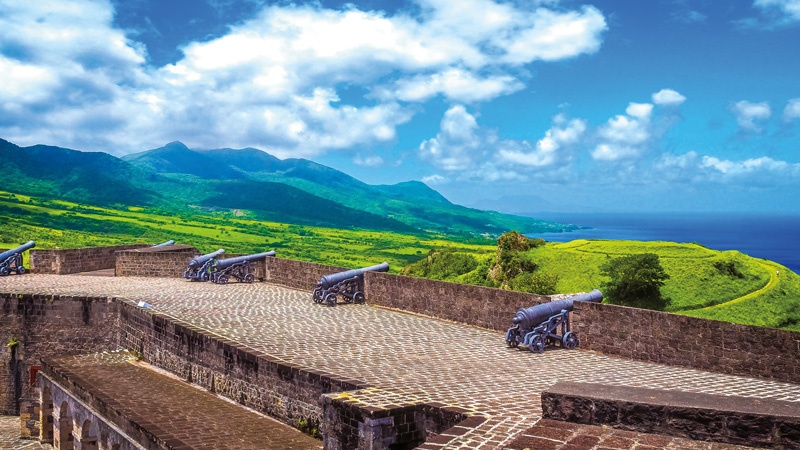Puerto Rico is often called the Island of Enchantment because anyone who visits this captivating destination will fall in love with its culture, natural formations, white-sand beaches, rainforests, delicious food and wholehearted warmth that characterizes the whole of the Caribbean. After the devastating aftermath of Hurricane Maria by the end of 2017, the island has progressively recovered thanks to tourism as visitors from all over the world arrive at the capital city of San Juan to get a taste of this fiery island.
Over 7,000 islands comprise the 26 countries in the Caribbean, and while all of them share a history of European conquest, each of them has its individual history, roots and cultural identity. Puerto Rico’s earliest inhabitants can be traced back to 1,000 years before the Spanish conquest. The Taino, a peaceful tribe, and the Carib, fierce cannibals, were the island’s residents when Christopher Columbus discovered the territory on November 19, 1493. Columbus named this discovery San Juan Bautista, but due to the land’s richness in gold, silver, copper, marble, etc., traders began calling Puerto Rico “rich port”, while the actual port and the capital city retained the name of San Juan.
The colonial period was difficult for the island. European diseases decimated the Taino population; African and Indian slaves were brought in to work at the sugar and ginger plantations, plus the neighboring Carib tribes, and French, British, and Dutch pirates raided the settlements often. In the second half the 16th century, Spain began turning the island into a military outpost due to its strategic location, events that culminated in the construction of the San Felipe del Morro and San Cristóbal forts.
By 1868, Puerto Rico began its journey towards independence from Spain, and accomplished it, gaining autonomy, a constitution and right to vote. However, what could have been a historic moment for the Caribbean island, proved a short lived victory when the Spanish-American war of 1898 resulted in the United States’ acquisition of several territories, such as Hawaii, Guam, Puerto Rico, and the Philippines through the Treaty of Paris.
Now, as a Commonwealth of the US, Puerto Rico shares a strange relationship with the North American country. Puerto Ricans are considered US citizens, and travel between the island and the mainland is domestic, but Puerto Ricans who live in the island cannot vote on presidential elections and such. The island also has its own olympic team and people don’t pay taxes the way US-born citizens do, but they can serve in the US Army. This dual identity can be both a good thing and a bad thing, because this can create blurry line between what it means to be American and what it means to be Puerto Rican. Most Puerto Ricans embrace the island’s status as Commonwealth, and they also embrace their identity as Caribbeans and Latin Americans.
For visitors is fascinating to watch their mixture of heritage, which ranges from modernity and luxury to tradition, culture and history. Every single person you’ll encounter will have a smile on their face and will welcome you warmly into their land; they will offer advise on places you can visit and will go to great lengths to make you feel safe and comfortable.
One of the best qualities about Puerto Rico, besides its friendly population, is the amount of new things and activities you can discover. You will find the most luxurious stores from brands like Bulgari, Dolce & Gabbana, Louis Vuitton, and other chic designers at the Mall of San Juan, which will undoubtedly provide an elegant and luxurious experience. Or you can go bigger and visit Plaza Las Américas, the largest mall in the Caribbean and the second largest in all of Latin America—a single afternoon won’t be enough to explore the whole of it! A good thing about San Juan is that parking lots are mostly free of charge and traffic is light to moderate, which makes car rental the best choice to get around the city and explore locations that could be out of reach otherwise.
That way you can travel to the best beaches on the island, which are usually found outside of San Juan. For that, you will have to go southwest, where you will have the perfect snorkeling experience and perhaps a sip of the legendary Caribbean rum afterwards to feel a bit like a pirate. Some of the best and most luxurious beaches in Puerto Rico are Dorado Beach, Bahia Beach and Boqueron Beach, among others. Or you can sail over to the islands of Vieques and Culebra on a ferry, a private boat or a yacht, and bask in the sun at a white sand beach with a paradisiac backdrop.
In Vieques you can head over to the bioluminescent Mosquito Bay, which holds a Guinness record as the brightest in the world, and it will definitely be one of the most beautiful spectacles your eyes will ever see. In culebra, you can’t miss the chance to visit Flamenco Beach, considered among the best beaches in the whole world. Here, you will have the chance to interact with the locals, get away from the hassles of the city. This region is also dedicated to the preservation of the sea turtle and other species, and has been considered a National Wildlife Refuge for more than 100 years.
If nature is what you’re here for, you will absolutely love El Yunque National Rainforest. This is the ideal place for a hike along the beautiful trails, for a refreshing splash in the natural ponds, to watch the waterfalls and learn about the endemic animal and plant species that you will find along the way. Whether it is as part of a group or something more private, it’s always recommended to come here on a guided tour so you can get the most of you visit. El Yunque is part of the US Forest Service and covers almost 29,000 acres.
Old San Juan
Once back in the city, leaving the best for last on your trip, after experiencing modern Puerto Rico, having shopped in every possible designer store available and having relaxed at some of the most paradisiac beaches in the world, you can put the cherry on top by heading over to the beautiful city of Old San Juan. The differences between modern San Juan and Old San Juan are glaring. You can experience both in different ways. The first reminds you of an island that is inherently American, with everything that comes with it, including the US dollar and the occasional American flag here and there, with forward-thinking youth unafraid of speaking their minds.
Old San Juan is purely Caribbean, with colorful buildings and narrow streets that remind you that there was a time when streets needn’t to be big enough for cars because there was no such thing. Still, cars cram along the roads, avoiding the mass of tourists that flood the streets, taking pictures of the colonial architecture, of the people, finding places to eat some of the most traditional Puerto Rican typical dishes like the famous mofongo, discovering new flavors, new textures. You will hear Puerto Rican tunes blaring from speakers as a large crowd slowly gathers around a stage of local musicians in the middle of a square. And you will see locals and tourists alike dancing in the streets.
You’ll keep walking upwards, and if you go to your right, you will find the Castle of San Felipe “El Morro” and Fort San Cristóbal, which will take you back to the militarized past of the island, and if you go left, you will reach the port of San Juan, where the sight of the stunningly massive cruise liners will take your breath away, and the new visitors they have brought onto the island will add to the festive environment all around the city. You can watch the sunset at the height of El Morro and dine at one of the spectacular restaurants on offer. When the sky is dark is when the real fun begins; the Caribbean has the most vibrant nightlife on the planet and you can’t miss the chance to visit the hottest bars and clubs where you will dance with the locals until the sun rises in the horizon. The magic and lively energy of an island like Puerto Rico is something you will never forget and it’s definitely something you have to place at the top of your bucket list.
Barbados
Barbados is known for many things: history suggests that rum originated here, and you may have heard that they hold the most extravagant festivals in the world, or you might admire the Jacobean and Georgian architecture displayed in the streets of Bridgetown, the capital city of the island, or you may even have heard that superstar Rihanna is a native of the island (and you most likely will hear her songs upon entering restaurants, stores or bars), but if whatever reason all of this hasn’t made you pack your bags and travel to this place, we’re going to tell you why you need to do it right now.
Barbados isn’t just an island in the Caribbean where you can relax on a beautiful beach; there’s so much more to it. The island of Barbados didn’t even exist a million years ago. It formed due to volcanic activity and the collision of the Atlantic crustal and Caribbean plates. Though no one knows when they arrived, the first settlers of the Island were Amerindians from Venezuela. Some time later, a Carib tribe submitted them and gained control of the island. But just as every other country found on this side of the world, Barbados also has a history of colonization, and the first to find the island were the Portuguese. They didn’t necessarily preoccupied themselves much with a small island like Barbados. Pedro A. Campos, who was leading the expedition, had his eyes set on bigger land as he and his crew made their way toward Brazil.
It was Christopher Columbus who actually defeated the Caribs, but still, Spain didn’t see any reason to colonize the island either. It was Captain John Powell from the British forces who arrived in Barbados on May 4,1625. With the Caribs gone, Powell took the island for King James 1st of England. After that, British settlements spread across the island and, just like the Amerindians, they saw the value of crops, especially sugarcane, so slaves were brought in to cultivate, and the sugarcane industry grew unimaginably.
By the 1800s, the population had grown predominantly black, and anti-slaving campaigns were growing loud in Britain, so a rebellion ensued. Bussa, a slave born in Africa, led an uprising that ended with almost 1,000 slaves killed, but it did give way to reformes that improved living conditions for slaves. The Slavery Abolition Act was passed on August 1833 and enforced a year later, bringing a new era of freedom to the island as former slaves became citizens of Barbados, began working for pay and gained civil rights. Barbados was called an independent nation on November 30, 1966, and Errol Walton Barrow became the first Prime Minister. Now Barbados is part of the Commonwealth Nations.
Nowadays, Barbadians seem aware of their mixed heritage. They celebrate the anniversary of their independence with big carnivals, parades, musical acts and performances. They are proudly Barbadian; they embrace their African roots and you can see the British heritage present in way they speak, in some of the sports they play, in the architecture. Barbadians are welcoming, warmhearted and energetic. And as small as the island might seem, there are plenty of things you can do on your visit.
And of course, you can’t travel to the Caribbean and not drink rum, and luckily there are many places where you can taste the best rum you’ll ever have. The capital city of Bridgetown boasts plenty of stores where you can find true Caribbean rum. But it’s in places like Mount Gay Rum where you will get the full experience. You can go on a tour, learn about its history and taste their rum. It’s one of the best and most historic rum distilleries in the world and you can’t miss the opportunity to buy a bottle from their shop. St Nicholas Abbey is also a famous Barbadian distillery, located at the oldest plantation house in the island, built in 1660. You can also attend the Food, Wine and Rum Festival, held toward the end of November, to get a full festive experience, with rum tastings, traditional dishes and live presentations. Barbados also has a lively nightlife, with several bars and lounges ready to provide unforgettable experiences. There’s something for everyone, from a tantalizing beachside party, to chic cocktail bars, dim-lit cafés for a more intimate atmosphere. You will find everything you need to have fun until sunrise.
Go on a walk along the Barbados Boardwalk, which spans almost 2 km, and stop by the shops and bars to have a drink. Go beach hopping—if there’s anything the island has plenty of is extraordinary beaches. The best ones are Bathsheba Beach, Dover Beach and Carlisle Bay; here you can find all kinds of watersports and activities, like waterskiing, parasailing, paddle-boarding, snorkeling, windsurfing, and much more.
You might also want to try a submarine ride into the depths of the ocean to see the coral up close and catch a glimpse of other species, like the sea turtle and fish endemic to this region. If you want to know a bit more about history, you can visit the Museum of Parliament and the National Heroes Gallery, where you learn about Barbados’ trajectory and enjoy Caribbean artworks.
The splendid Harrison’s Cave offers the opportunity to go underground and explore the wonders within its limestone walls. It was opened to the public in 1981, and you can pay a visit to admire the growing stalagmites and the stream of water that travels through the natural passageways that are over 2 km long. For nature lovers, there is more to see: just head over to the Barbados Wildlife Reserve, which spans four acres of mahogany trees and is part of the Farley Hill National Park, where you can relish the greenery, the local flora and the population of green monkeys that live here, along with other species like maras, flamingos, iguanas, parrots and more.
For golf enthusiasts, professionals and amateurs, the Country Club at Sandy Lane is the perfect place to stop by. The luxury golf resort offers three courses, high-end accommodation, and a restaurant with panoramic views of the courses and the island beyond. Barbados is one of the favorite destinations for yacht owners, and you will see more than one spectacular vessel cruising the crystal clear waters along the coasts or entering the harbor; the best marinas are possibly Port St. Charles, the Barbados Yacht Club, and for larger vessels, the Port of Bridgetown is widely accommodating.
Don’t miss the chance to visit this fascinating island and everything else it has to offer, whether it’s a glass of rum by the beach or a luxurious retreat at a private villa, Barbados is the place where you will replenish your energy.
St. Kitts & Nevis
Unlike Puerto Rico and Barbados, St. Kitts and Nevis seem to be quiet, contemplative and relaxing. You won’t find the bustle of Bridgetown or the spirited festivity of Puerto Rico; instead, you will find a calmer atmosphere that will take you on a unique adventure.
St. Kitts and Nevis are two islands that stand side by side, bordered by coral and made almost entirely of volcanic rock. St. Kitts, the largest of the two, is comprised mostly by the mighty Mt. Liamuiga, an extinct volcano. Like Barbados, the first inhabitants of the islands were Amerindians from South America and Caribs, and it was yet again Christopher Columbus who first caught sight of the islands in 1493, but it was the English who colonized St. Kitts in 1623 and Nevis in 1628, producing sugarcane plantations and bringing slave workforce. However, the French began colonizing another part of the island shortly after, and this caused conflict between the two nations, which culminated in a battle at Brimstone Hill Fortress, in which Britain was victorious, and in 1783, St. Kitts was given to Britain through the Treaty of Versailles. The islands gained independence on September 19, 1983.
What’s wonderful about St. Kitts is that you can experience different sides of it and always discover something new, and it isn’t a place that will make you want to just stick to the beachside with a margarita in your hand—this is a place you’ll want to explore from bottom to top. One of the most beautiful sights you’ll ever see is up at the Brimstone Hill Fortress, which sits high in the mountain—you will feel as though you’ve entered a different dimension where everything is otherworldly. A lot of history and national identity is preserved inside the ruins, and you can witness it by venturing up the steep roads that will lead you there.
You can also catch a ride on the St. Kitts Scenic Railway, a three-hour tour around the island. It was built between 1912 and 1926 for crop transportation from different parts of the island to the capital city of Basseterre. Nowadays it’s a popular attraction for tourists who wish to see a broad panorama of the island and the magnificent views it offers. And as history suggests, former plantations and old manors are also interesting to visit. You can learn about the families who used to live there and stories about the region, as well as the goods they produce to this day. Romney Manor is a famous manufacturer of batik products made with quality fabrics; here you can learn ancient and modern textile techniques and you can buy some of the most beautiful and colorful pieces of clothing you’ll find in the Caribbean.
Another great historical house is Fairview and its botanical gardens. This is the only French plantation left in St. Kitts, built around 1701. Now you can visit the house and walk through the rooms and gardens, either on a tour or on your own. You can attend cooking classes inside the property, have a glass of rum at the bar, or even go on a quick swim in the pool. The tropical flowers are enough to visit this place and fall in love with the lush nature that flourishes around the big manor.
However, if you’re feeling adventurous, a hike up the dormant stratovolcano Mount Liamuiga might be for you. Unlike other hiking sports we find in other Caribbean islands, this one isn’t for the faint-hearted. The mountain will make you work hard as you make your way up the tropical rainforest—the path uphill isn’t an easy one but it’s worth it.
Exploring the mountain on a guided tour is a must; you will go through the most scenic spots and will learn about medicinal plants and other useful tips. And if your tour guide tells you that cannibals used to inhabit these regions, don’t be afraid—those times are long gone. What you may encounter now are mongooses, deers, monkeys and even wild donkeys. For an easier hike, you might want to visit the Wingfield-Phillips Rain Forest Nature Trail—you can even make this trip on a truck to cover more ground and see the spectacular sights and you will have a higher chance to spot the monkeys.
There are two sides of St. Kitts, the one you immerse yourself in through culture, history and tradition, and the one where you indulge in utmost luxury and comfort. If after all that hiking this is what you’re looking for, St. Kitts is home to one of the most stunning golf courses in the Caribbean. The Royal St. Kitts Golf Club offers the ultimate golfing experience since it opened in 1976. With the perfect conditions to golf and iridescent panoramas, this 18-hole course was recently renovated and redesigned by architect Thomas McBroom from Toronto, Canada.
For a luxury beach retreat, Oualie Beach in Nevis is the spot for you. Nevis is a small island, and its biggest appeal is its unspoiled nature. Here, you can snorkel, go on a scuba diving adventure, go horse riding along the coasts and watch a beautiful sunset. Another option is Pinney’s Beach, where you can relax and forget about the rest of the world. The beauty of these beaches is their isolation and lack of human intervention.
As a destination that depends greatly on tourism, St. Kitts and Nevis has been working on boosting its offer and optimizing the traveler experience—it’s worked on building luxury resorts and expanding its port capacity to attract more vessels, so don’t miss the chance to visit this quaint island and all its charm.
And not only St. Kitts, but Barbados and Puerto Rico as well as every other island in the West Indies, will make you fall in love with the crystalline waters of the Caribbean and you will never want to leave.
Text: Amura ± Photo: Sean Pavone, Dreamstime / MARRIOT TRAVELER / ATFR / MARINAS / TRAVERL / shutterstock / CONDE TRAVEST / SEABORN / DR / vaques / Courtesy of Puerto Rico Tourism Company / SMA Architects / PNY / CULTURE TRIP / Giuseppe Zanotti Design / KUFER / TRIPSAVY / CRONISTA / ASD / TOP 10 / EXTREME SX / SMET / CRUNE / FAIRWAYS / HABLEMOS DE ISLAS / HILTON HOTELES /MT NA

